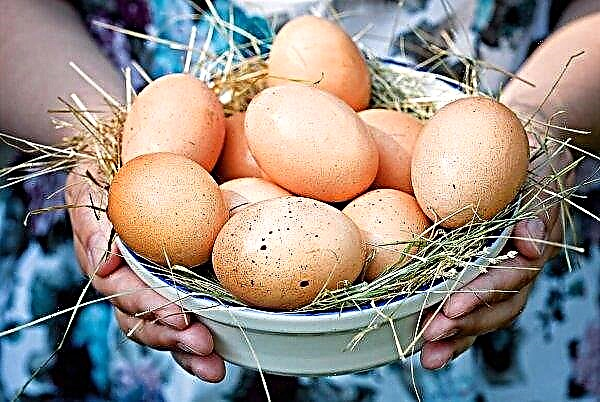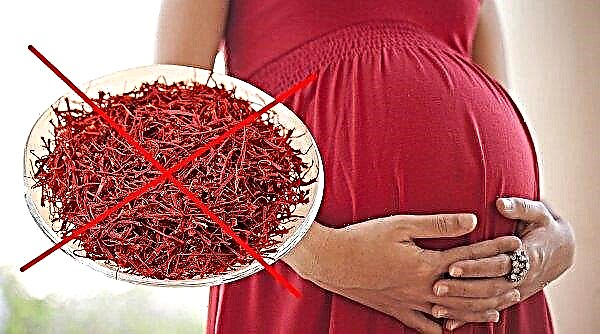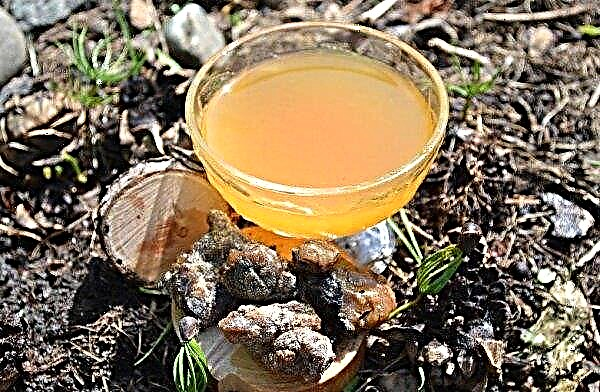The classic style in the design of the space looks good not only next to office buildings or pathos villas. You can make a small plot of Italy or France and at home. To do this, you just need to study the main features of this style and bring them to life.
Features and features of the classic style
Classical style as a separate direction in architecture and landscape design originated in the palaces of Ancient Greece and Rome. But its rapid development was in the Renaissance. And now, after almost five hundred years, the classic is still as popular and does not give up its position when we talk about the trends of modern landscape art.

The whole structure of this style is based on strict canons:
- The main components of the landscape of any locality should be located symmetrically, as well as have clear lines and simple geometric shapes. All trees and bushes are planted according to 3 types of patterns: square, rectangle or staggered.
- Plants must also have strict regular shapes. They are cut in the form of a cube, pyramid, ball or cone.
- The lawn is always perfectly trimmed. Any irregularities are prohibited.
- Pergolas are located at the intersection of paths, again to maintain a certain symmetry.
- Any reservoirs (fountains, ponds, waterfalls) are located in the center of the site (park zone), turning into the main note of the composition. They must also conform to basic geometric shapes.
- The sculptures should be clearly visible, so they are not hidden between the trees, but exhibited in open parts of the territory.
Very well, this area of landscape design is suitable for city parks and venues near office buildings, as it creates an atmosphere of ceremony. But if you wish and the presence of a bright and wide area, which has an area of 10 acres, you can embody the basic features of the style in the interior of the home garden.
Regular style
In this style, it is desirable to design extremely vast sections of the correct geometric shape so as not to disturb the overall compositional pattern (it should look absolutely symmetrical). Best of all, such sites will look next to museums, respectable mansions, administrative buildings.
Regular stands next to log cabins and chalets are not harmonious. At the same time, it is important that the building itself is located in the central part of the site, so that it is easy to distinguish between the ground and front zones.
Important! The entire site in a regular style is considered as a single composition, which has separate symmetrical functional areas. Among them, the front and main parts, as well as the territory for recreation, are distinguished.
The main elements without which it is impossible to design the site in a regular style include:
- Pedestrian alleys paved with tiles or paving stones - they perform the function of linear space dividers.
- Mandatory presence of a massive central composition - it can be a group of fountains or a large reservoir, around which trees and shrubs are symmetrically planted. Often for this purpose create curly lawns.
- Rabatki - This element is considered the most characteristic of the regular style. This name has curly flower beds in which flowers create complex and voluminous drawings. Most often, rabatki are planted mirrored on the left and right sides of the site.
- Small architectural forms - It is also a must when creating a regular garden. It is advisable to use benches and arbors, as well as antique flowerpots and sculptures, which must be repeated symmetrically throughout the site.
- Bosquets - quite often when creating landscape compositions this technique is used, which is a garden inside the garden. This small area is separated from the main array by means of vines or other hedges, and also implies the presence of garden furniture or a gazebo, a small flower bed and a fountain. This is a kind of relaxation area, hidden from view.
- Ponds - The regular style is characterized by the design of small cascades or step fountains. If the use of artificial ponds is implied, then they should have the correct rounded shape.
Regular style is fundamentally different from landscape. If the first is characterized by deliberate rigor and rhythm, the second is aimed at observing soft lines. The alleys are mostly smooth ornate, and the trees around them can be planted in a completely chaotic manner.
Such parks fit much more naturally into the surrounding landscape, as if being a continuation of it. Among the plants, mainly deciduous species are chosen: oak, linden, maple.
The main differences in the landscape style can also include the following:
- lack of need for symmetrical or mirror layout of space;
- alternation of various types of relief (plains with ravines or hills);
- the use of rock gardens, retaining walls;
- parts of the garden open to the eye gradually, as you move along the paths;
- all trees have a natural crown shape;
- the main composition is mixed - shrubs, herbs and trees can be planted together;
- minimal use of fountains or sculptures.
French garden
Making a garden in this style is perfect for lovers of natural greenery. The space is literally immersed in herbs, flowers and trees. French courtyards are characterized by some elements of English gardens due to the close interaction of the cultures of these two countries. So, in landscape Versailles projections appeared rose gardens and brick-lined alleys. The original classic of France is the presence in the gardens of sprawling vineyards.
Much attention in this style is given to natural compositions: habitual statues and arbors are inferior to ordinary shrubs, rose gardens and lavender. In front of the house in most cases there is a veranda or a small covered patio with a flower garden. Very important in this style is the principle of color design: dominated by blue, sand and light olive shades. Thanks to the benches hidden in the thickets of grapes or among the trees, the space looks more romantic.
Italian garden
It is not difficult to learn the Italian style: in the gardens there are labyrinths and hedges created from spirea, vines or thuja. Also landscape designers highlight fountains as a must. They can be completely different: from small round platforms to massive multi-level cascades.
For Italians, the beauty of nature is very important, so gardens used to be set up near churches, cathedrals, villas and palaces. A garden in this style cannot do without boxwood borders, mosaics in the alleys, as well as lined with rows of antique sculptures that emphasize the elegance of space.
English garden
For the modern English style of designing personal plots, maximum naturalness and versatility are characteristic. This stroke can be traced in everything: in the design of space, and in the form of flower beds, shrubs and trees. Also this style is full of romance.
Designers often associate with well-ordered country houses: climbing roses, wide flowerbeds, perennial grasses and stone fences that surround the house and garden. Near the house, in the middle of the garden is a wide lawn. Garden paths are made of bricks, as are the walls of houses.
The main elements of landscape design
To make the site not only beautiful, but also as comfortable as possible for daily use, all its elements need to be carefully thought out. Although they have different appearance and functions, they are used for one purpose: to improve the appearance of the personal space. Among the elements that are most popular are parterres, fountains, ponds, sculptures, arches, and hedges.
Ground and lawn
Ground grass looks very beautiful and spectacular, emphasizing the ceremonial classic style. This is an elite type of lawn, which is used mainly in the ceremonial parts of the site, for example, near the entrance to the house or next to curly flower beds. Often they make compositions from it that become the main accent of space, although you can use it simply as a basic background for sculptures and flower beds.
Important! There are certain rules that relate to the height of the ground grass. There are 2 types of haircuts: low (up to 2 cm) and regular (up to 4 cm).
It is worth noting that the total area of scenery should not exceed the green lawn area. This is the golden rule of the garden landscape. It takes time to grow a good lawn. For example, English grass stands, which are widely known for their softness, have been grown for decades.

The main trick in this case is that the wilted layer of the lawn is not mowed, but left as a kind of pillow, creating a layer between the soil and young grass. It also prevents weeds and other herbs from germinating. As a grass to create a lawn in a classic style, meadow grassgrass, red fescue or a field mushroom are suitable.
Hedgerows and Topiary
No classical garden is complete without hedges. Firstly, they look much more interesting than ordinary metal, wood or stone fences. Secondly, they can easily be used for zoning of space, which is extremely important for creating a site in this style.

As often as possible in a classical garden use topiary, since working with them is very simple due to their plasticity. Designers define boxwood, thuja and yew as the best breeds for curly haircuts. You can even create live sculptures based on them.
In order for the architectural composition to be as high-quality and symmetrical as possible, it is worthwhile to perform paired figures. Shrubs are suitable for the design of numerous borders or arched structures. Recently, the tendency to create replicas of antique sculptures based on plants and rigid frames has become very popular.
Ponds and fountains
When choosing the type of pond that will decorate the classic garden, it is worthwhile to carefully analyze the relief of the site. If there are already small hollows or depressions in the personal territory, it is advisable to place a home-made pond in this place. This design trick will help to maximize the naturalness of the surface, which will allow it to look harmonious.
If the pond is located in the southern or eastern part of the territory, then during the day this site will be lit as much as possible. It is worth making sure that there are no ornamental or fruit trees in the immediate vicinity of the pond. The roots will eventually begin to destroy the walls of the reservoir, letting their roots farther and farther.

In addition, foliage and fruits will constantly pollute the water. Designers recommend placing an artificial pond near a rockery or alpine slides. You can decorate this place with the help of various large-sized stones. Also, fountains are often used as decor for a classic garden. They look quite relevant on the site, complementing the landscape composition.
Such designs are of two types:
- submersible - are placed in or near a pond so that the pump pumps water, supplying it directly to the fountain;
- stationary - are independent elements and are made in the form of mills, animals or statues with jugs.
For the classic style, designs with nozzles in the form of columns or flowers are perfect.
Suitable plants for classic style
In the classical style, the priority is given to topiary plants. Compositions of juniper, boxwood, arborvitae, spirea, jasmine, and also pyramidal poplar will look very good on the garden plot. Designers advise planting trees not in separate groups, but in the form of alleys.
It is worth approaching this issue with all seriousness, given the direction and width of the paths between the trees. It is better to plant them not randomly, but to build a geometrically correct compositional pattern. Very well the idea of vertical gardening will fit into the classic garden. So, part of the fence can be twined with vines or mallow. Jasmine and decorative willow can be planted near ponds.

The use of small architectural forms
One of the main accents of the classical style is small architectural forms. It is their use that helps to realize the maximum number of ideas and characteristics of this direction.
Among the most common are:
- massive columns and slabs of marble, stone, gypsum;
- rotundas are small round arbors that are traditionally located at the intersection of alleys or garden paths, as well as near water bodies;
- monolithic cast-iron benches (they can be replaced by metal objects made using the art of forging);
- sculptures in the antique style (these can be images of gods, Olympians or mythological events);
- pergolas (canopies) made of wood or cast iron;
- flowerpots with legs in the Greek style;
- aerial twisted arches in the central part of the garden.
All this will emphasize the style of garden decoration and complement a single classic composition.
A growing number of people tend to decorate their sites, creating a single landscape drawings. You should first study the topic, a description of the features of the classical style and its main components. In this case, the gardener will be able to cope with the task no worse than the landscape designer.












